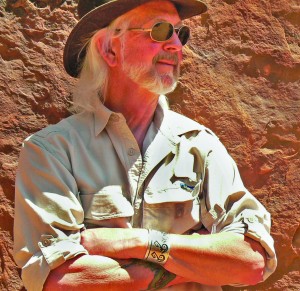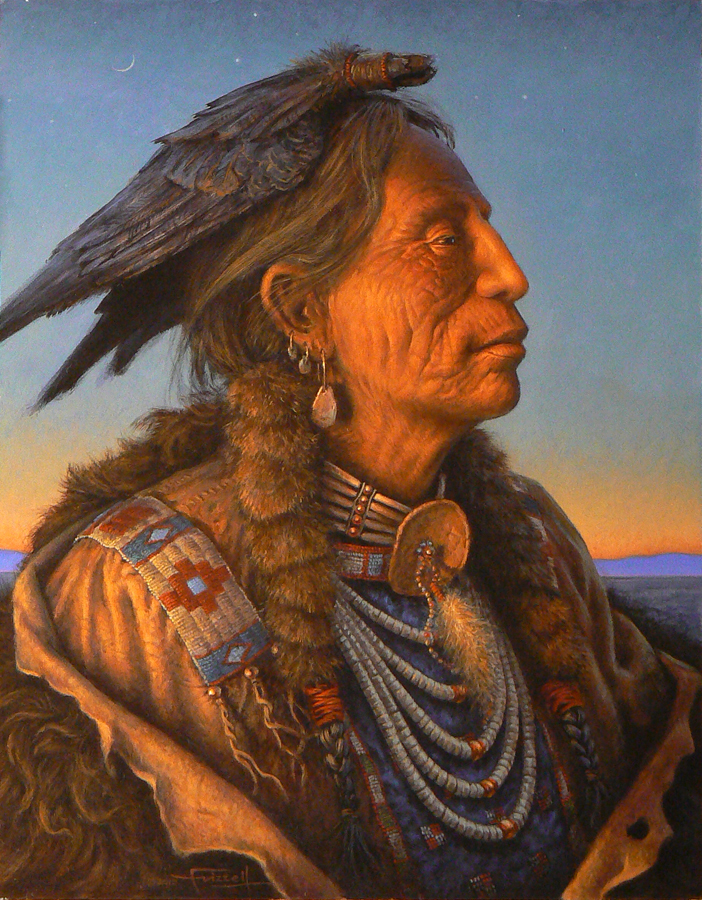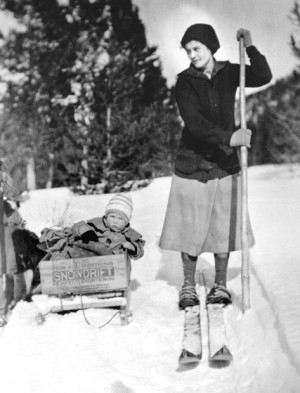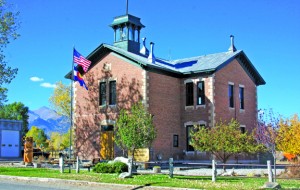What would be the best course of action when the director of the art department at your college informs you just prior to graduation that you will never make it as an artist? That you are too “scattered?”
In the case of artist Charles Frizzell, he chose to ignore her admonition and went on to have a successful and rewarding career as a working artist despite that lack of endorsement.

Frizzell, who currently lives and works in Cañon City, certainly wouldn’t be considered scattered these days. He knows exactly what he is doing and how to do it. His current work demonstrates a mastery of his medium and subject matter, which, at the moment, can be found in an auto wrecking yard. His current “portraits” of old trucks and vehicles show a refinement in technique and approach which speak volumes about both his dedication to his work and ability to not take himself too seriously.
His interest in art, as he recalls, goes back to an early age. As he recalls, “I actually do not remember ’discovering’ an interest in creating any kind of artwork; it was always a part of me, like breathing or seeing. When cleaning out my parent’s house after they passed, I found drawings from my very early childhood that my mother had saved – drawings that I certainly do not remember. Those early drawings were of trains, as my grandfather would take us down to the railroad station to watch the old steam trains come in. Later, my father could draw fairly well, and would draw profiles of WWII aircraft for me, which I would then try to reproduce. I drew constantly, and sold my first drawing at age 10. By 12 or 13 I was painting. I was by no means a child prodigy, as my early efforts were pretty awful.”
A “Draw Me” ad on a matchbook cover “won” him a small scholarship from a correspondence school while he was in high school. Through that experience he learned that, “A number of artists actually made a living from their artwork. A concept that changed my life!”
He attended Murray State University in western Kentucky, the school that employed the nay-saying art critic, and graduated with a B.S. in Fine Arts.
After that he decided to go west, and in 1968 landed in Oklahoma City were he found employment in a frame shop and did pastel portraits in a mall on weekends to help pay bills. Soon after he decided to move even further west and found himself in Victor, Colorado. He described it as, “An ’end-of-the-line’ sort of place at that time, but rent was cheap, the views were grand and there was no limit to the subjects for paintings. I had always leaned toward realism, and the old buildings, the mining machinery and tools were perfect for me at that time. The light at 10,000 feet was a mind-boggling revelation to me, and my colors, my compositions, and my way of seeing changed forever.”
Soon, he began “eking out a living” as an artist, scraping together enough money to buy a house in Cripple Creek. It was an old stone place, partially bermed into the ground and located next to an old railroad spur. Turns out it was the old Anheuser-Busch bottling plant and came complete with a ghost.
“Almost everyone that came to visit experienced the ghost, which was mostly benevolent, though not always,” said Frizzell. He later added his art studio onto the historic structure.
For several years after that he commuted to Colorado Springs to supplement his income working in another frame shop, but a sell-out exhibit of his artwork at the Garden of the Gods Art Gallery in the mid-seventies helped determine his career path as an artist.
“I was finally making a living from my artwork … I worked with a publishing company producing calendars and greeting cards. Another company produced prints, t-shirts, and cups, while still another produced collector plates,” he said.
His original works have been included in the top 100 of the National Arts for the Parks exhibitions three times, winning a bronze award once and once being chosen as poster artist. A painting of the Great Sand Dunes was included in the top 100 of the recent Paint the Parks exhibition, and another small painting was recently included in the top 50 of the miniatures of the Paint America exhibition. His fantasy paintings have twice been juried into the international “Spectrum: the Best of Contemporary Fantastic Art” exhibitions, and he has won several awards in the Phippen exhibits in Arizona.In 2008 he was included in the “Winner’s Roundup Exhibition” at the Phippen Museum of Western Art in Prescott, Arizona.
Frizzell worked primarily with oils since college but began experimenting with acrylics and discovered that, “They dried quickly and did not have a lingering odor as did the oil solvents, which was a plus since my studio was open to the rest of the living area. The early acrylics did not have the ‘lushness’ of oils, and so I went back and forth experimenting with both. Then watercolors became a big part of my artwork and are still a favorite media, although I use them only occasionally. The subject dictates the media I use, as well as the size and format. I primarily use acrylics now as I developed an allergy to the solvents for oil painting.”

Over the years he has been drawn to a variety of subject matter including old buildings and mining artifacts, historic Western scenes and icons such as mountain men. He was particularly drawn to Native American subject matter. “I was fascinated by the artwork with which they lived, not as ‘art’ as we know it, but as spiritual symbols and daily implements that moved into the spiritual aspect, and many of my subjects from the early eighties into the present involve these ideas as I, with a non-native heritage, understand them.”
Frizzell’s artistic influences include; Andrew Wyeth, Norman Rockwell, Maxfield Parrish, John Singer Sargent, J.W. Waterhouse, Michael Parks and many others. He worked with the accomplished Southwestern artist Frank Howell in the mid-eighties and considers his imagery and technique a great influence.
Currently he is focused on the old vehicle paintings, as well as mystical Native American paintings, with a few plein air watercolors from time to time.
His original artwork is currently shown locally at Gallery 150 in Salida and a new gallery, Michael’s on Main in Cañon City. He also shows at the Chalk Farm Gallery in Santa Fe, New Mexico, and at the Lilly Vigil Gallery of Native American Art in Nevada City, Calfornia.
For more information, visit: www.frizzellstudios.com – by Mike Rosso


